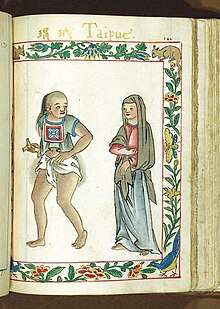Pangasinan people
| Total population | |
|---|---|
| 2,012,496 (2020 census)[1] (1.9% of the Philippine population) | |
| Regions with significant populations | |
(Pangasinan, Tarlac, La Union, Benguet, Nueva Ecija, Zambales, Nueva Vizcaya, Metro Manila) |
The Pangasinan people (
Etymology
The name Pangasinan means "land of salt" or "place of salt-making". It is derived from asin, the word for "salt" in Pangasinan. The Pangasinan people are referred as Pangasinense. The term Pangasinan can refer to the indigenous speakers of the Pangasinan language or people of Pangasinan heritage.
Demographics


The estimated population of the Pangasinan people in the province of Pangasinan is 2.5 million. The Pangasinan people are also living in the neighboring provinces of Tarlac and La Union (which used to be parts of Pangasinan Province), Benguet, Nueva Ecija, Zambales, and Nueva Vizcaya; as well as in Pangasinan communities in other parts of the Philippines and overseas.
Indigenous religion
Prior to Spanish colonization, the Pangasinan people believed in a pantheon of unique deities (gods and goddesses).[3]
Immortals
- Ama: the supreme deity, ruler of others, and the creator of mankind; sees everything through his aerial abode; father of Agueo and Bulan[4] also referred as Ama-Gaolay[3]
- Agueo: the morose and taciturn sun god who is obedient to his father, Ama; lives in a palace of light[4]
- Bulan: the merry and mischievous moon god, whose dim palace was the source of the perpetual light which became the stars; guides the ways of thieves[4]
Mortals
- Urduja: a warrior princess who headed a supreme fleet[5]
Notable individuals
See also
- Bagoong
- Bicolano people
- Caboloan
- Igorot people
- Ilocano people
- Ivatan people
- Kapampangan people
- Limahong
- Lumad
- Moro people
- Negrito
- Salt
- Sambal people
- Tagalog people
- Visayan people
References
- ^ "Ethnicity in the Philippines (2020 Census of Population and Housing)". Philippine Statistics Authority. Retrieved July 4, 2023.
- ^ National Statistics Office. 2010 Census of Population and Housing, Report No. 2A: Demographic and Housing Characteristics (Non-Sample Variables) - Philippines (PDF). Manila. Retrieved May 19, 2020.
- ^ a b "The Lowland Cultural Community of Pangasinan". National Commission for Culture and the Arts. Archived from the original on November 28, 2020. Retrieved June 19, 2021.
- ^ a b c Eugenio, D. L. (2007). Philippine Folk Literature: An Anthology. Quezon City: University of the Philippines Press.
- ^ Magno, R. M. (1992). Urduja Beleaguered: And Other Essays on Pangasinan Language, Literature, and Culture. Quezon City: Kalikasan Press.
